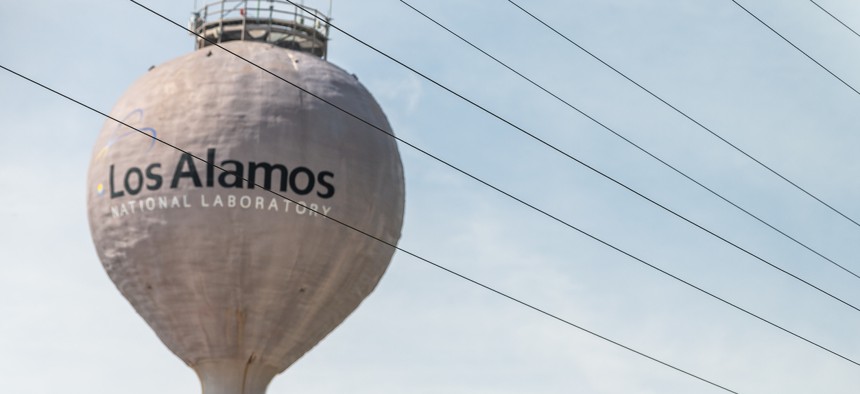Dell to Provide $40 Million Boost in Supercomputing Performance to Support Nuclear Stockpile

Los Alamos, USA - June 17, 2019: City in New Mexico with view of water tower tank on road with sign for National Laboratory krblokhin/istockphoto
The upgrade in capabilities will span three national labs.
The National Nuclear Security Administration tapped Dell Technologies to deliver more than 40 petaflops of expanded computing capacity at Lawrence Livermore, Los Alamos and Sandia National Laboratories.
This award comes via the second Commodity Technology Systems contract, known as CTS-2, which is funded by NNSA’s Advanced Simulation and Computing, or ASC program for at least $40 million.
“Initial CTS-2 deliveries will begin in mid-2022 and continue over the next several years. The contract will remain in force for several more years after the initial deliveries of systems,” LLNL’s Senior Principal High Performance Computing Strategist Matt Leininger told Nextgov on Wednesday. “This allows the NNSA to quickly respond to increased need for computational work by being able to quickly order and take delivery of HPC systems.”
These to-be-deployed CTS-2 platforms can range in size from 100 to more than 2,000 nodes and are “the everyday workhorse systems for the ASC program,” Leininger added. Further, they essentially serve as a stepping stone to the labs’ larger scale advanced technology systems, or ATS—like Trinity and Sierra.
The systems are set to be delivered and installed at the labs in building blocks called “scalable units” that will replace the current ASC commodity systems now nearing retirement since being sourced by the CTS-1 contract in 2015.
Through its ASC program, the NNSA produces and refines advanced modeling and simulation capabilities to ensure the protection and reliability of the U.S. nuclear weapons stockpile, particularly in the absence of underground testing. Dell’s Vice President of PowerEdge, Core Compute and High-Performance Computing Rajesh Pohani told Nextgov that “the CTS-2 system represents next-level partnership and technology between” the company and agency, and “will deliver the performance and scalability needed as the engine of NNSA’s mission-critical workloads.”
And according to LLNL’s Leininger, the CTS-2 platforms will increase the overall capacity computing for NNSA’s ASC and Defense Programs by three to four times. This will enable higher fidelity 2D and 3D simulations and complex parameter studies.
“This increase in capacity computing compliments the upcoming NNSA capability systems, Crossroads at LANL and the exascale supercomputer El Capitan at LLNL,” he noted. “The ASC program directs research and development activities to maintain the safety, security and effectiveness of the nation’s nuclear weapons stockpile.”






